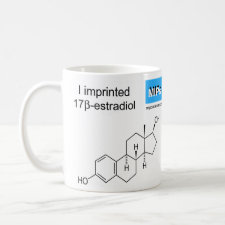
Authors: Zhang J, Wang LL, Han YT
Article Title: Preparation of 17β-estradiol surface molecularly imprinted polymers and their application to the analysis of biological samples.
Publication date: 2013
Journal: Journal of Separation Science
Volume: 36
Issue: (21-22)
Page numbers: 3486-3492.
DOI: 10.1002/jssc.201300850
Abstract: 17β-Estradiol (E2) surface molecularly imprinted polymers have been prepared using functionalized monodispersed poly(glycidyl methacrylate-co-ethylene dimethacrylate) beads as a support. The resulting polymers were found to be uniform in size (5 μm), and the surfaces of the microspheres possessed large pore-like structures. A chromatographic experiment demonstrated that the resulting microspheres exhibited high levels of recognition and selectivity toward the target molecule. The particles were employed as a novel sorbent in a molecularly imprinted SPE protocol. A method was then developed involving the combination of the pretreatment with HPLC to determine the levels of estrogen secreted from Michigan Cancer Foundation-7 cells. The obtained results revealed that the extraction recoveries of E2 from real samples were in the range of 73.0-97.5% with RSDs of < 7.5% (n = 3). Calibration curves were established with R values > 0.9996 for concentrations in the range of 0.50-100.00 ng/mL. The LOD of this new method was 0.14 ng/mL. Compared with traditional C18 SPE agents, the particles showed high selectivity and extraction efficiency for E2 in the pretreatment process. The particles could therefore be used to determine trace estrogen in biological samples with a UV detector only
Template and target information: 17β-Estradiol, E2
Author keywords: Cell culture solution, 17β-estradiol, Estrogen, hormones, Molecularly imprinted polymers



Join the Society for Molecular Imprinting

New items RSS feed
Sign-up for e-mail updates:
Choose between receiving an occasional newsletter or more frequent e-mail alerts.
Click here to go to the sign-up page.
Is your name elemental or peptidic? Enter your name and find out by clicking either of the buttons below!
Other products you may like:
 MIPdatabase
MIPdatabase









